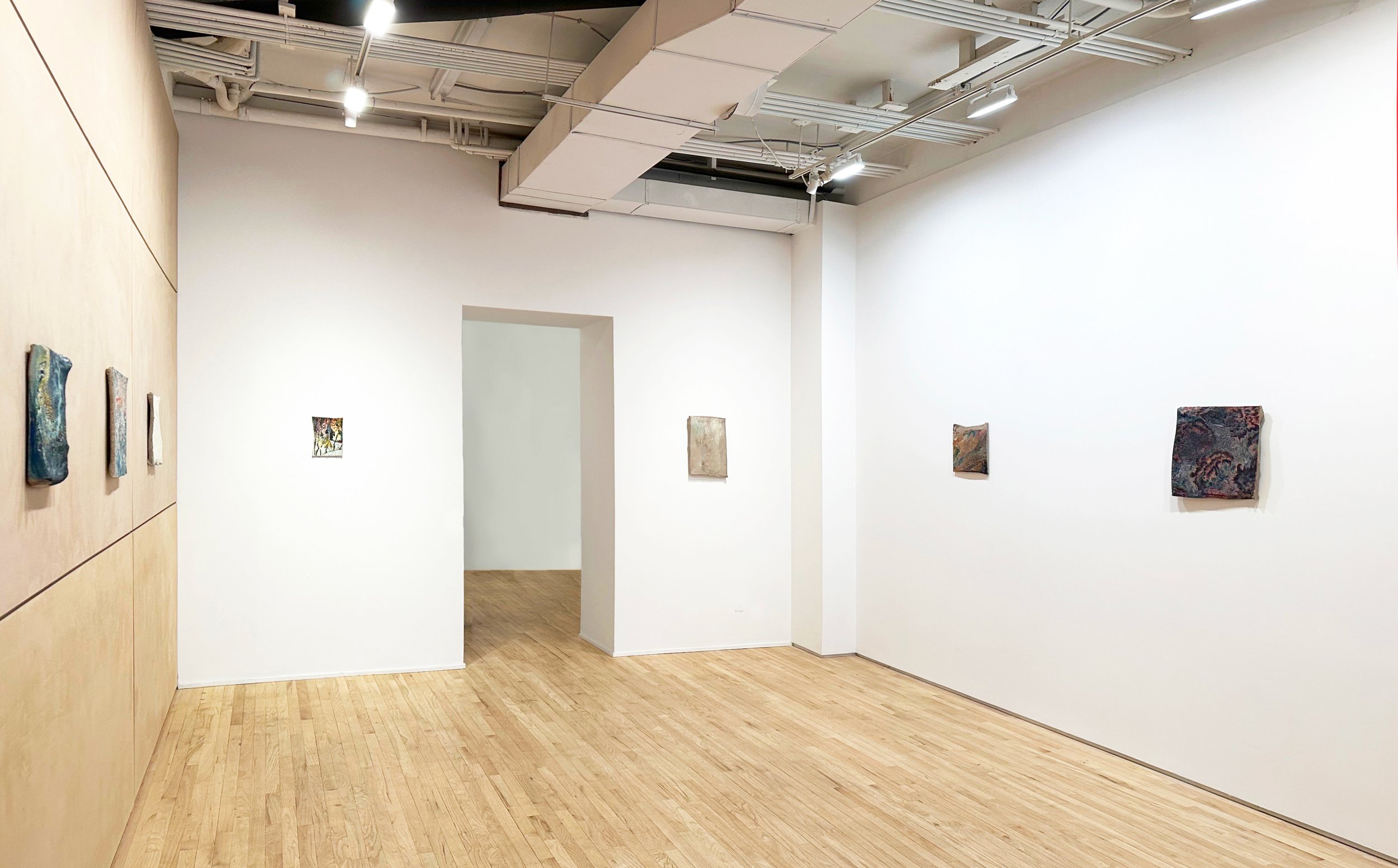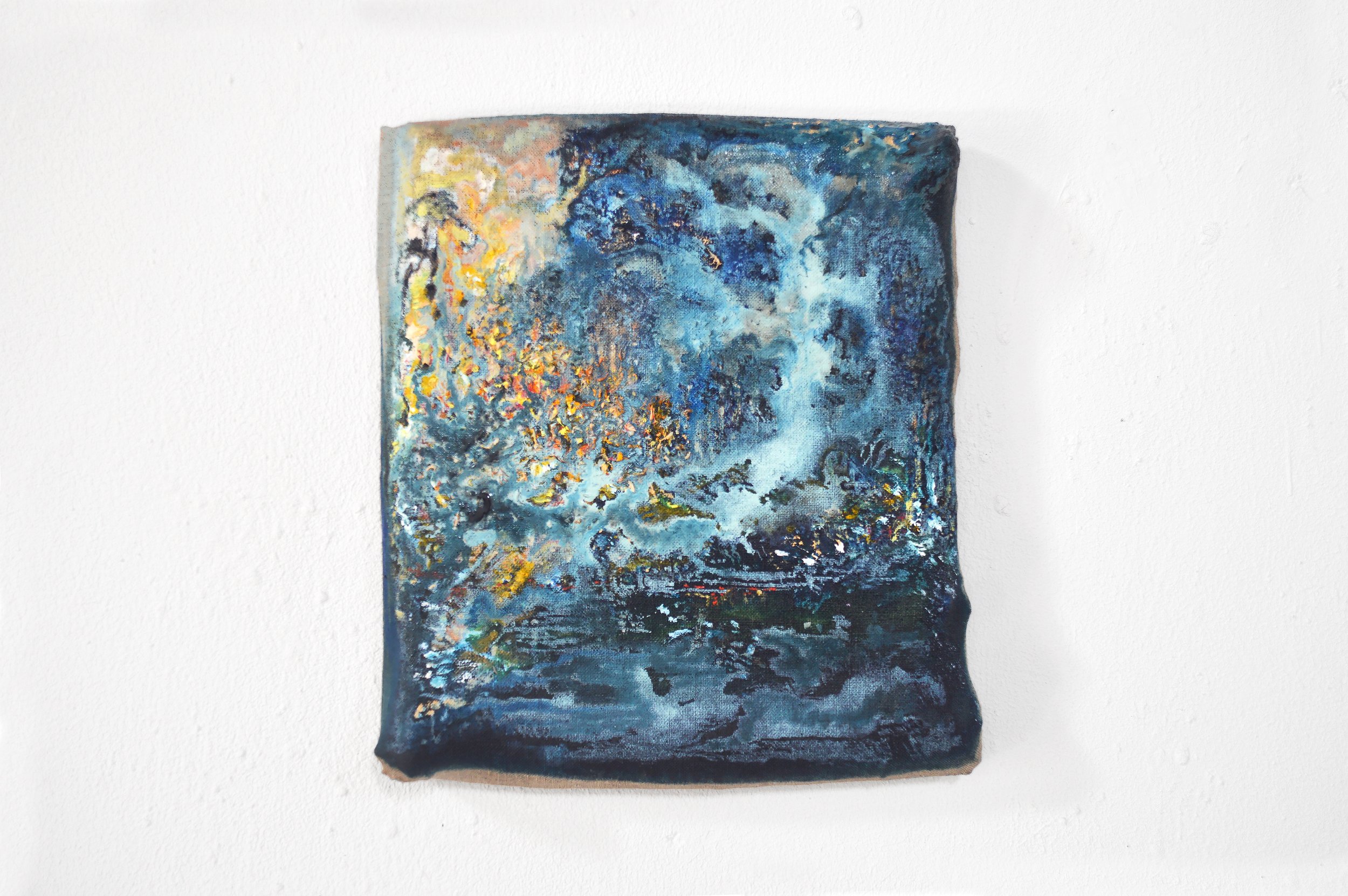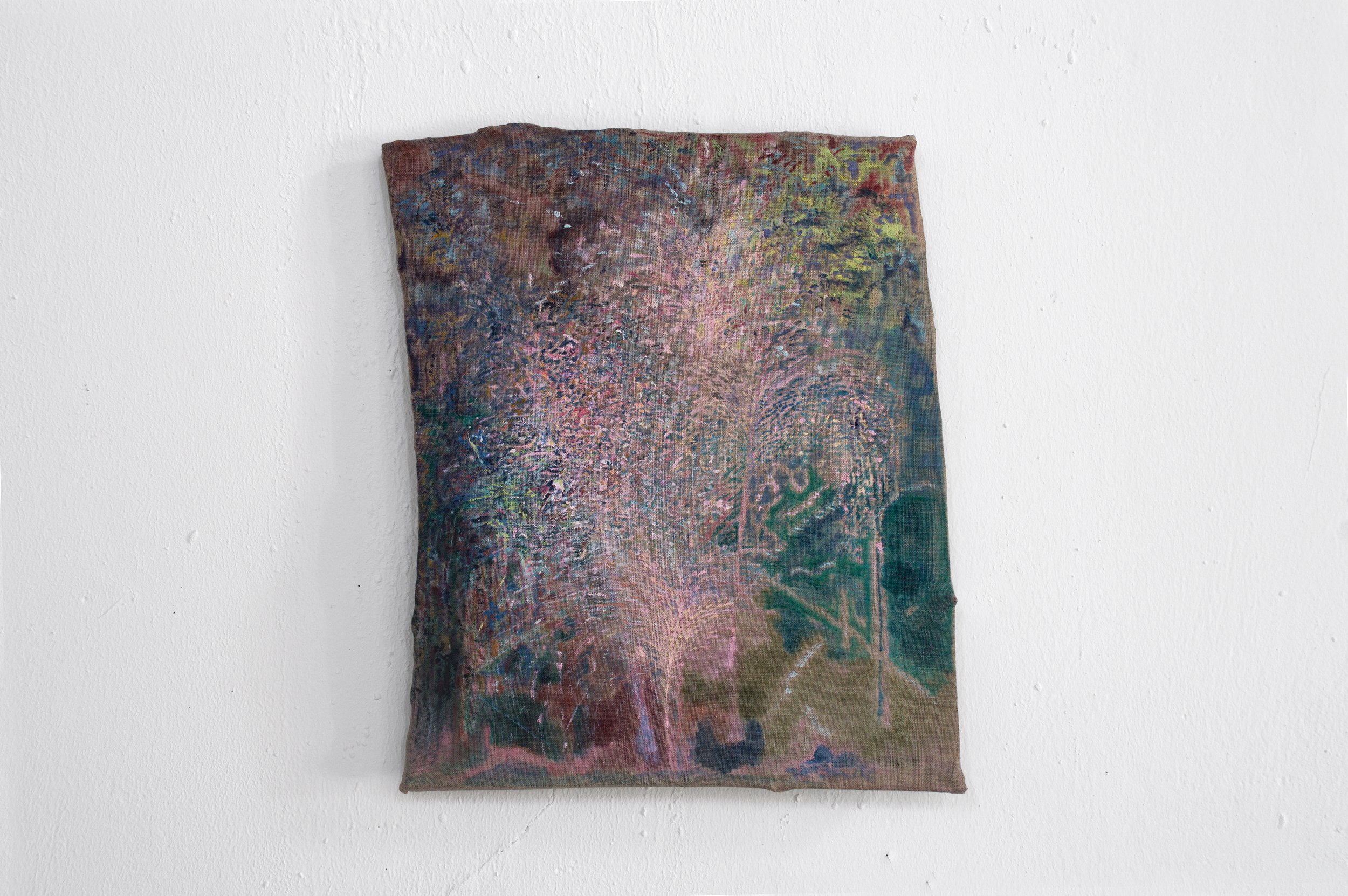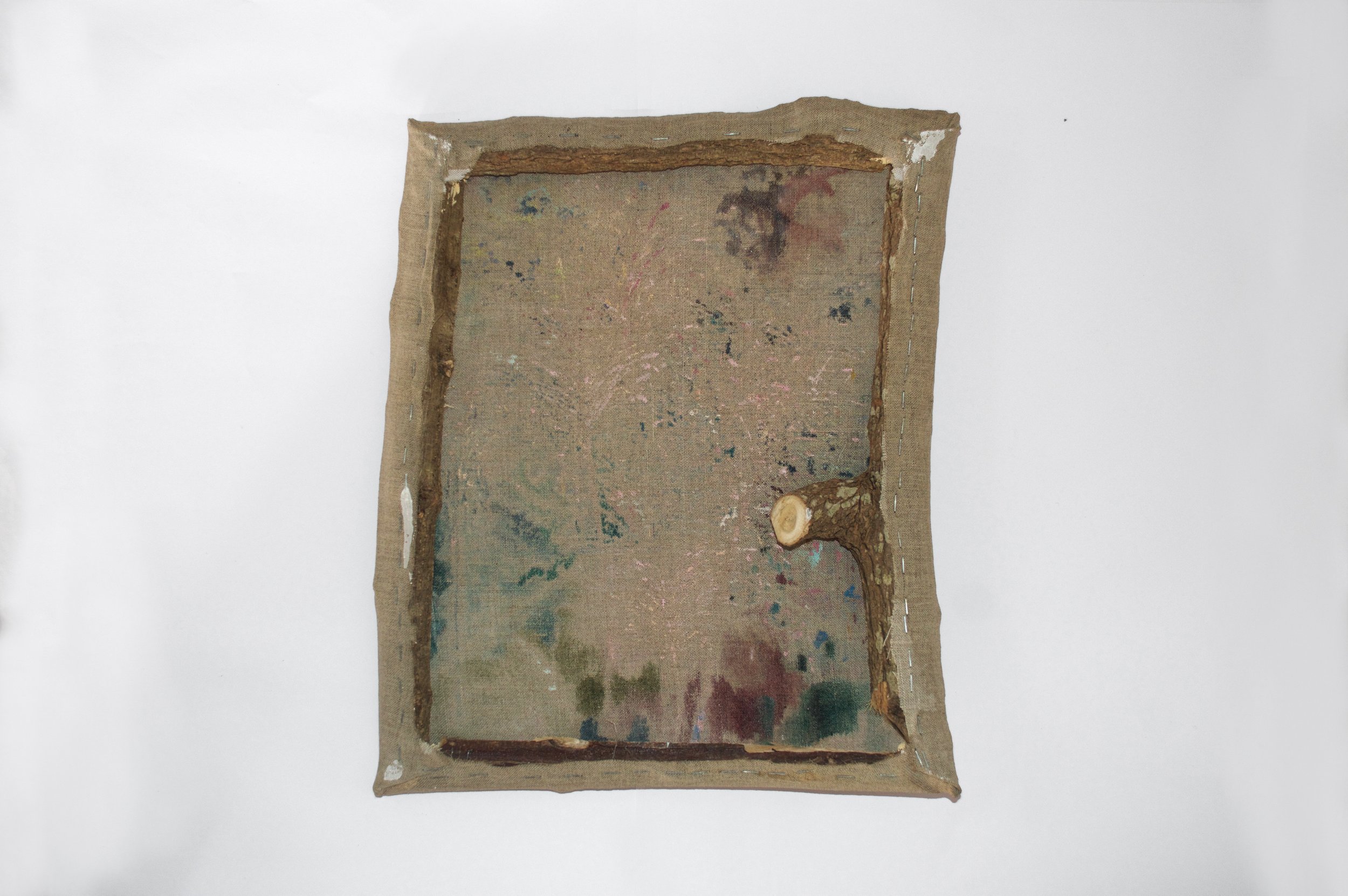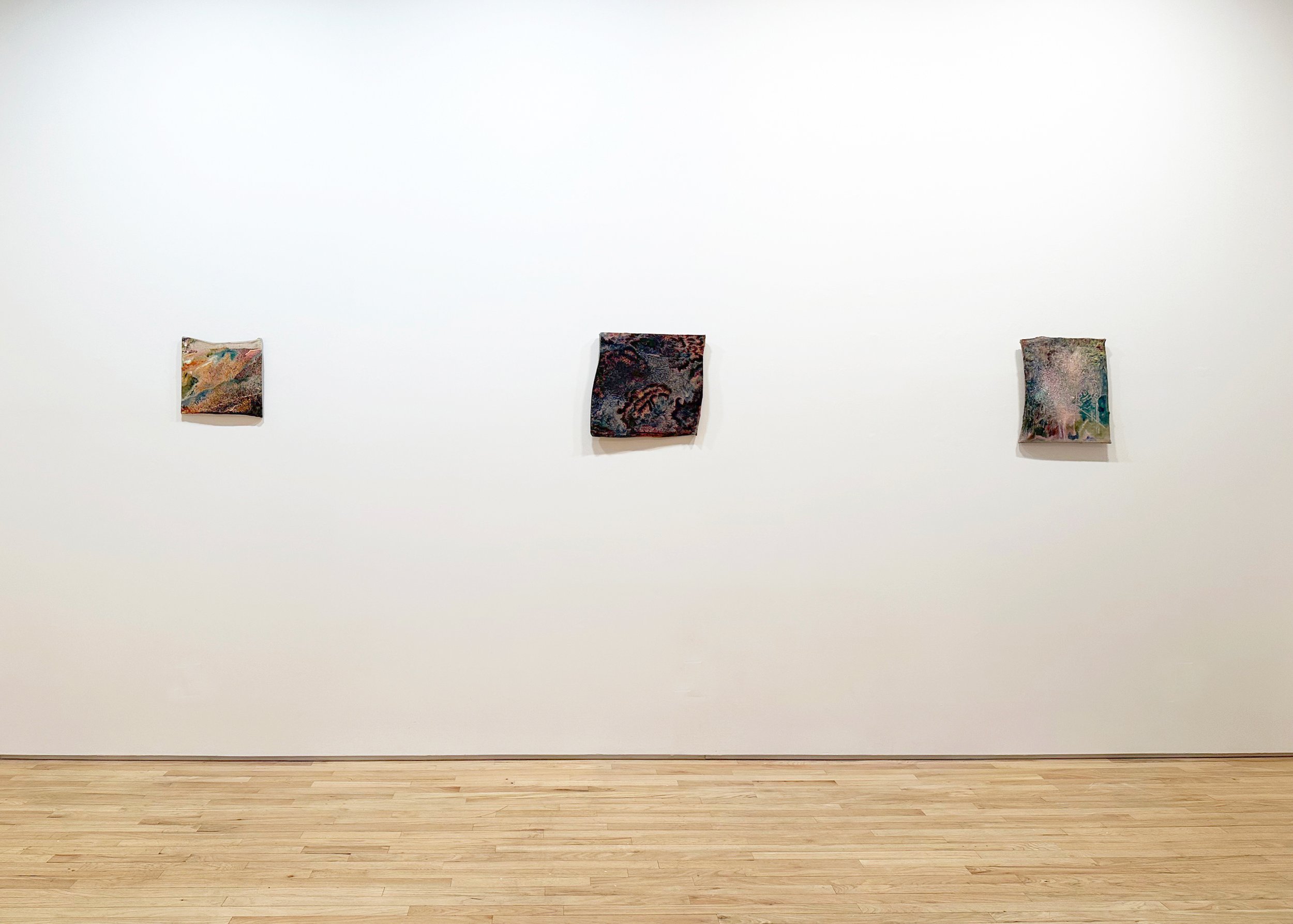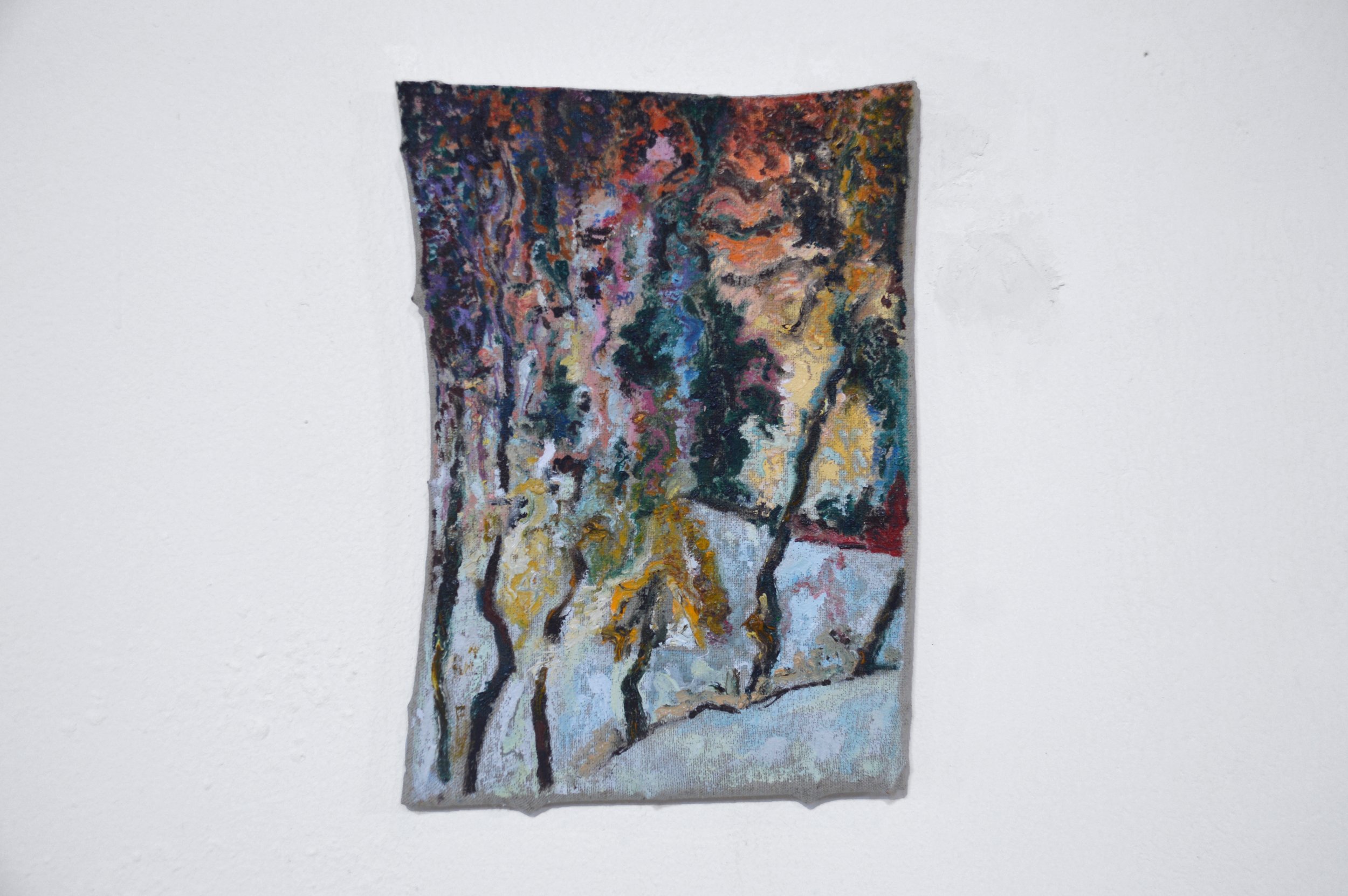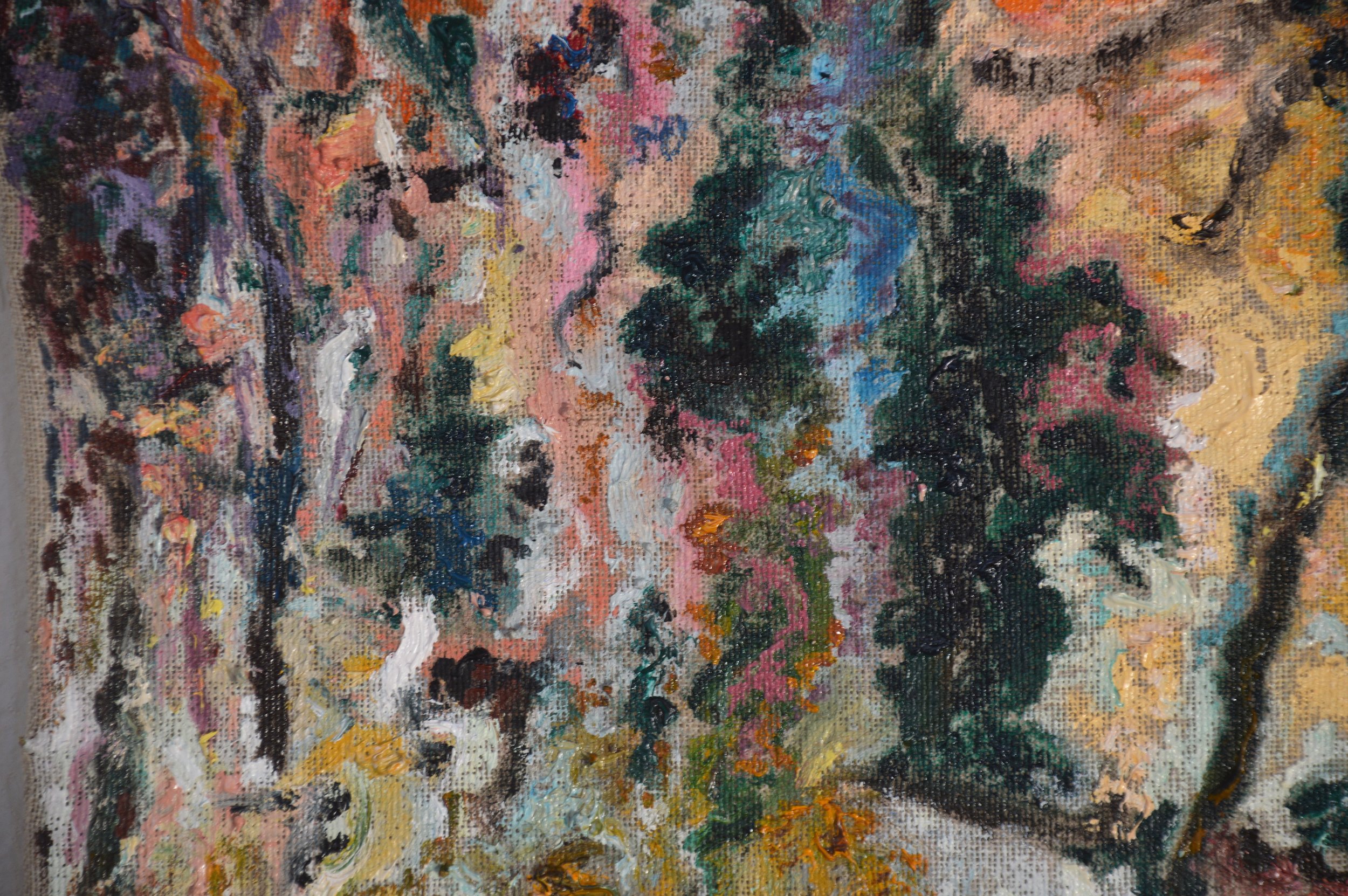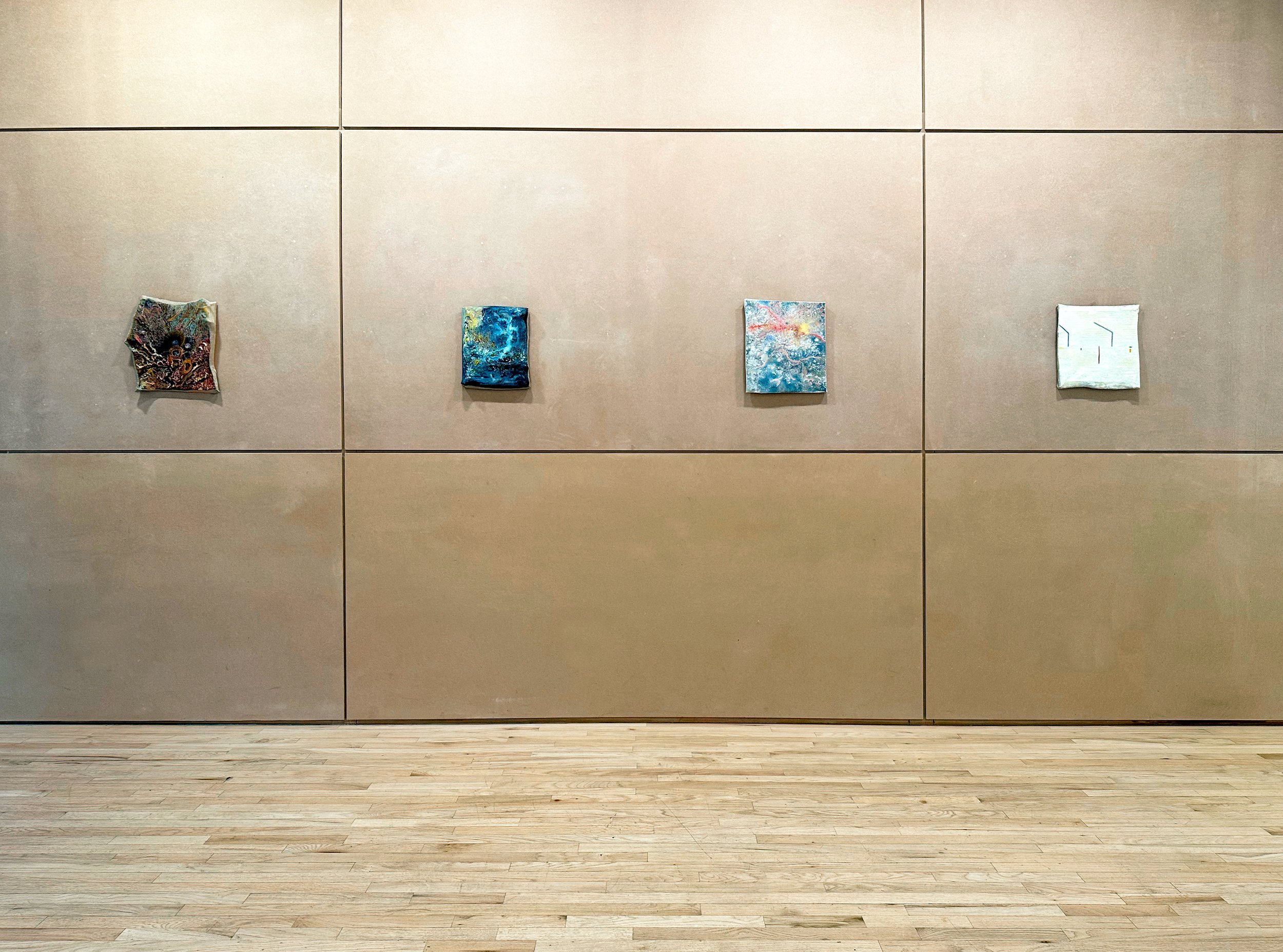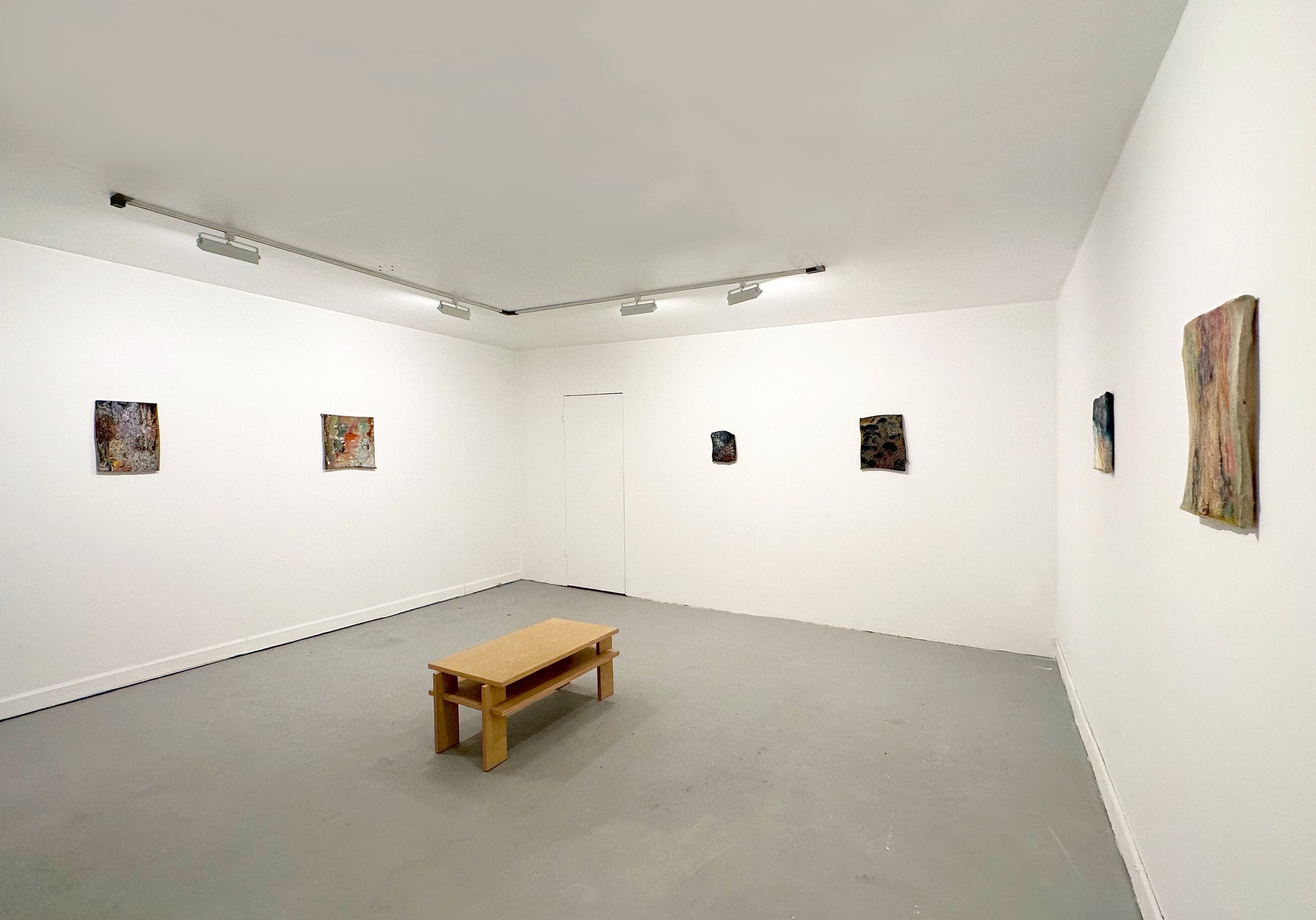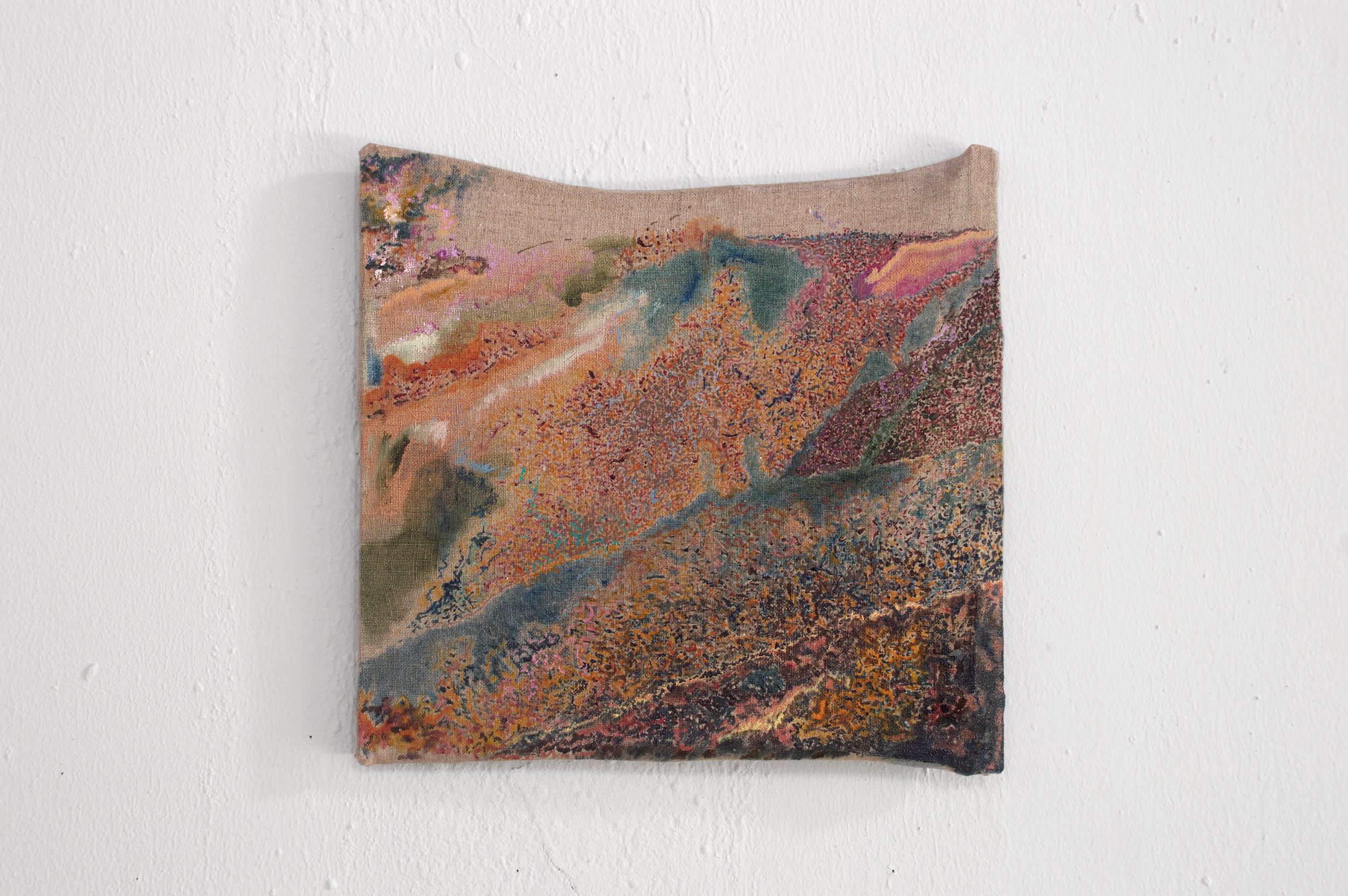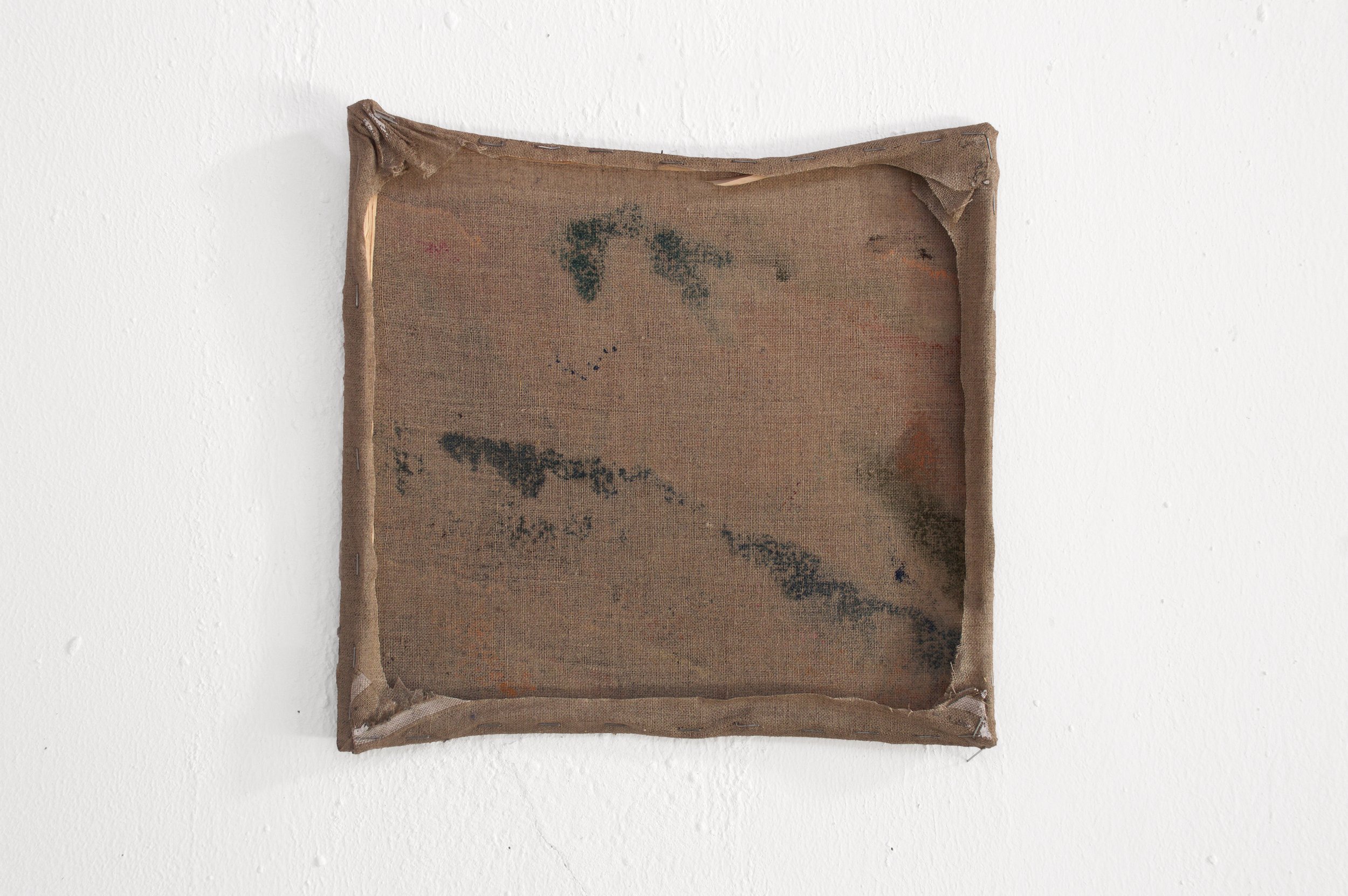Javier Arce
FROM NATURE
April 29 - June 10, 2023
Javier Arce’s oil paintings stretched on repurposed untreated wood culled from the artist’s countryside environment in Cantabria (northern Spain) bespeaks a pastoral esthetic beckoning study. It’s the appeal of art-making from the Barbizon school from the 19th century, but also contemporary influences as wide and large as gardener Gilles Clement, botanist Francis Hallé, author Richard Powers, or plant theorist and philosopher Michael Marder that imbue the artist’s work. Arce’s subject matter goes beyond the classical bucolic genres of landscape painting or antiquated ideas of pastoral life to locate new forms of inhabiting territory. He extends these concerns to notions of rural communitarianism, solitary being, and the inner life of plants. At times Arce portrays new types of non-human inhabitants in discrete evocative scenes, gesturing to the ongoing confluence of the rural and the urban.
In From Nature, the process of bridging human thought with nature is a primary concern. He applies the idea of a ‘plantlike existence’ modeled after the aforementioned thinker Michael Marder, embracing temporality, freedom, material knowledge, wisdom, and transformation, much like the inherent characteristics of a garden. The artist depicts colorful and vivid landscapes of plant and tree species, wildflowers in bloom, and inflorescent flowers bursting forth, expressing movement. On the close at hand (Muhlenbergia capillaris), for example, shows an explosive, fireworks-esque pink hued muhly grass in full exhibit of its capillary like branching pattern. On the close at hand (Obey) however, is a rich, deeply tinted maroon landscape of mutating velvety patterns. On the close at hand (Feísmo, Pedro’s house) describes, albeit in an abstract gesture, a scene of architectural defiance and the self-built style called feísmo in Spain. The represented poles or rods recall Mondriaan’s lines and grids, but in a muted hazy scene.
The artist’s striking, curvy armature-like frames, an ingenious and novel support, stem from the artist’s own living situation. He stockpiles wood for the winter heating of his cabin, and coincidentally the size of the paintings, parallels the size of the logs cut for his chimney. This creates a very sculptural application to painting, and the work is equally relevant when viewed from behind. The role of the cabin has a history in his work; in many ways he uses the figure of the cabin as a gateway to another way of seeing or experiencing the world. A social realignment, perhaps. Like many artists who turn to the rural as a lifeforce, Arce also engages in an ecological awareness that desires for a more transparent relation to food, labor, and social relations. The artist applies agro-poetical gestures to the synthesizing of art and life; indirectly he points to the efforts of rural communitarianism within the context of the traditional rural environment, evading romanticism. These concerns are evoked vis-à-vis themes of selfhood, mood, environment, and the nature of landscape painting itself.
Jennifer Teets

